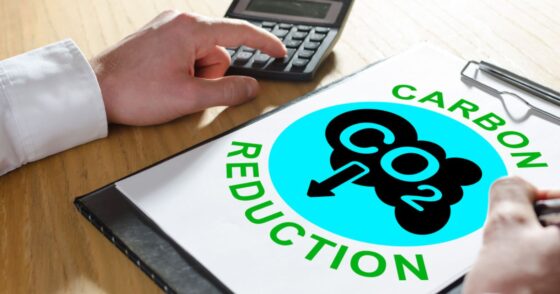
In France and the United Kingdom, independent bodies this week criticized the climate action of their respective governments, pointing to shortcomings in public policies to achieve stated goals of reducing greenhouse gas emissions.
The national greenhouse gas inventories make it possible, in the context of the Paris Agreement, to monitor compliance with the commitments of the signatories. But how are these emissions measured?
What is a greenhouse gas?
Greenhouse gases are gases that absorb infrared radiation (part of the sun’s rays) emitted from the Earth’s surface. In this way they contribute to the greenhouse effect, allowing a reasonable temperature on the earth’s surface.
For the national inventories, so-called anthropogenic emissions as a result of human activities are taken into account. Largely increasing in the atmosphere, they are responsible for global warming.
Estimates instead of measurements
National inventories of greenhouse gas emissions are produced on the basis of estimates, according to a simple mathematical formula. Emissions are calculated by multiplying the amount of activity by an “emission factor” related to the substance in question.
For countries that do not have the possibility to determine national values for their emission factors, the UN Climate Experts (IPCC) offer standard data.
The emission factor makes it possible to convert the consumption of the various energies into the amount of greenhouse gases.
Countries follow IPCC guidelines for reporting. It develops recommendations for data collection methods, sectors to monitor and the “global warming potential” of each gas.
This is an index that “in particular, it makes it possible to compare the relative impact of greenhouse gases on climate change”by converting direct emissions into “CO2 equivalent” (eqCO2), explains Citepa, the organization that carries out the French inventory. This is the “Global Warming Potential (GWP) reflecting the impact of a greenhouse gas on the climate”.
Countries involved
Not all countries have the same responsibilities under the United Nations Convention on Climate Change (UNFCCC). The so-called Annex 1 countries, which include all members of the OECD but also Russia, have made commitments to reduce their emissions and make an inventory report available two years after the observed year.
For the rest of the world who, “Today 70% of the world’s greenhouse gas emissions, there is no obligation but to try to make national communications at regular intervals, which are less accurate, which are not at all in a harmonized format”explains Philippe Ciais, research director at the Laboratory of Climate and Environmental Sciences (LSCE) and author of the IPCC.
China, the largest emitter of greenhouse gases, and the Gulf States belong to this category.
Sectors and gases to be monitored
The most important sectors are screened:
- energy, with all fuel combustion activities in industry, transport and construction.
- industrial processes, for example the production of cement or glass, the chemical, electronics, metal industries, but also the use of products as substitutes for ozone-depleting substances
- agriculture, forestry and other land use
- Waste Processing
The main greenhouse gases identified by the IPCC are carbon dioxide (CO2), methane (CH4), nitrous oxide (N2O), hydrofluorocarbons (HFCs) mainly used in propellants, hydrocarbons, perfluorinated compounds (PFC) found in air conditioners , sulfur hexafluoride (SF6) used as thermal insulation and nitrogen trifluoride (NF3) used in microelectronics.
National inventories reported to the UNFCCC also include emissions of four indirect greenhouse gases: carbon monoxide (CO), volatile organic compounds other than methane (NMVOC), nitrogen oxides (NOx) and sulfur (SOx).
AFP